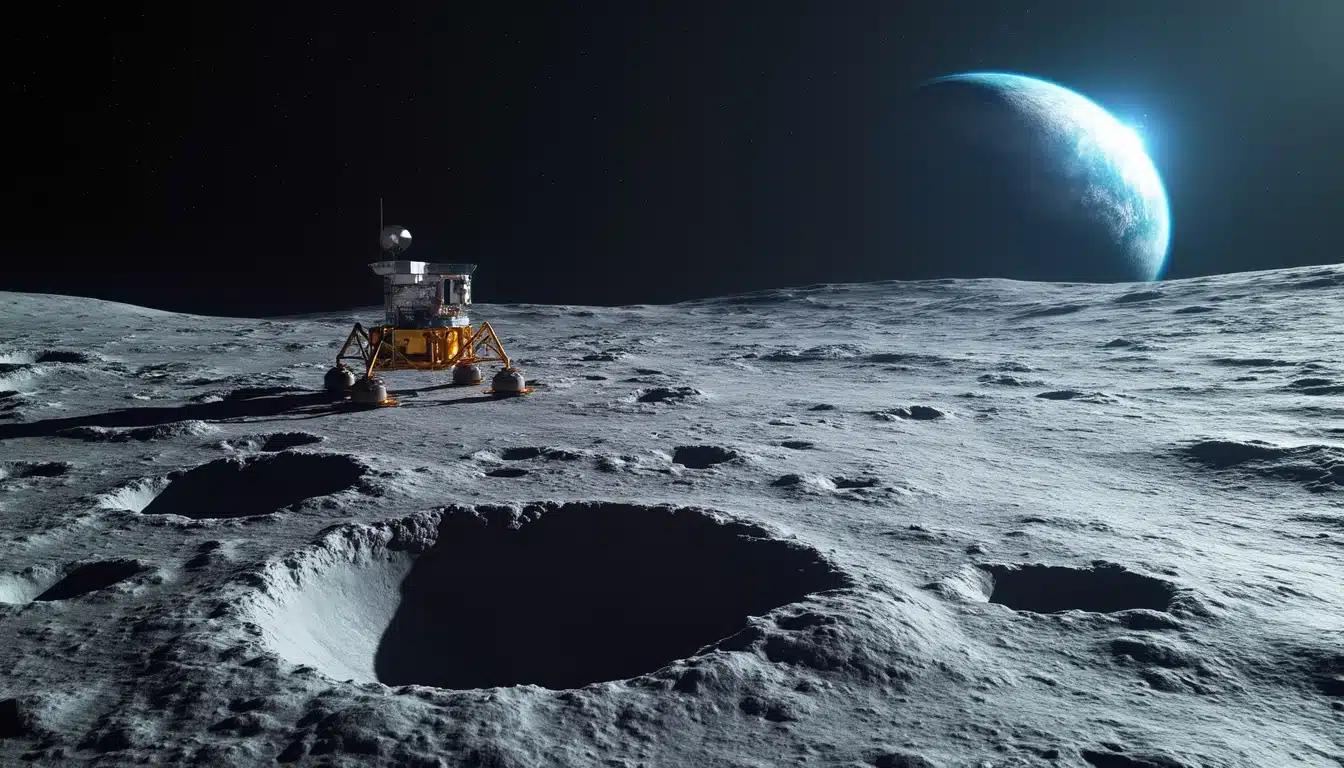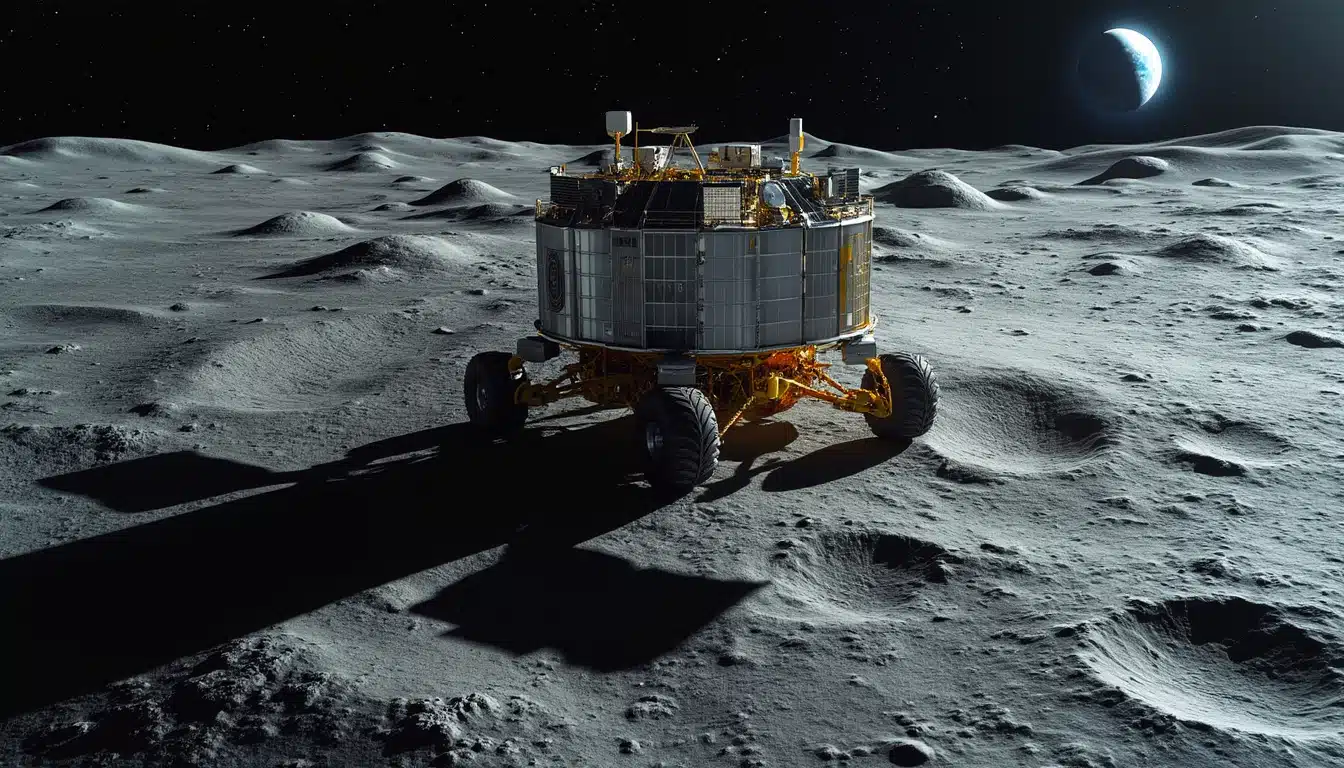The cosmos has always been a source of wonder and curiosity, and recent developments in lunar exploration have only fueled that passion. NASA has once again demonstrated its prowess in lunar photography by capturing stunning images of the Blue Ghost Lander, a remarkable vehicle that has recently completed its mission on the Moon’s surface. This important event showcases the capabilities of modern orbiter technology and highlights a new frontier in space science. With each photograph taken, we deepen our understanding of the Moon and set the stage for future explorations.
The Blue Ghost Lander, part of NASA’s initiatives for moon lander missions, made headlines as it celebrated its historic landing in Mare Crisium. In the wake of its landing, NASA’s Lunar Reconnaissance Orbiter (LRO) captured a photo of the lander on the lunar surface, both awe-inspiring and illustrative of the complexities involved in lunar surface exploration. Notably, the imagery reveals intricate details about the Moon’s diverse landscape, while simultaneously telling the story of humanity’s persistent quest for knowledge beyond our planet.
A Historic Encounter: The Blue Ghost Lander’s Journey
The Blue Ghost Lander’s voyage to the Moon has been a journey marked by innovation and determination. Launched in January 2025, its 45-day transit culminated in a successful landing on March 2, 2025. The lander’s primary mission, termed “Ghost Riders in the Sky,” is a collaboration between Firefly Aerospace and NASA, embodying aspirations toward advanced lunar exploration.

The Significance of the Mission
This mission not only signifies a leap forward for NASA space missions but also embodies the collaboration between governmental and commercial entities in space exploration. The Blue Ghost Landers’ core objective is to deploy and test various NASA instruments designed for mapping and analyzing the lunar surface. Furthermore, these payloads will provide critical insights into the geology of the Moon, helping scientists prepare for longer-duration human presence on its surface.
Among the ten NASA instruments onboard, there are several that have potential implications for future lunar bases and exploration missions. By sampling Moon rocks and analyzing them on-site, the mission offers a remarkable opportunity to extract data that can propel lunar research into uncharted territories.
The Landing and Initial Findings
Upon touchdown, the Blue Ghost Lander wasted no time deploying its array of scientific tools. From determining the chemical composition of lunar regolith to assessing the radiation levels on the surface, every second is crucial as it contributes to space photography and data collection efforts. Initial analyses suggest that the terrain surrounding the landing area has unique mineralogical characteristics that may provide clues about the Moon’s geological history and its evolution over time.
With state-of-the-art NASA imagery captured from above, the LRO not only documents the success of the landing but also aids in identifying various features of this extraterrestrial environment. The precise details in the photos enable scientists to compare conditions in Mare Crisium with those found in other regions of the Moon.
The Power of Orbiter Technology
Central to the successful capture of the Blue Ghost Lander’s images is the sophisticated technology utilized by NASA’s Lunar Reconnaissance Orbiter (LRO). The LRO has been orbiting the Moon since 2009, equipped with high-resolution cameras capable of producing images that reveal the lunar surface with precision and detail that were previously unattainable.

Innovative Features of the LRO
The orbiter is equipped with several scientific instruments, including a Lunar Reconnaissance Orbiter Camera (LROC) that provides high-definition images over extended periods. This capability allows for continuous monitoring of the lunar landscape, which is essential for studying changes that may occur due to varying environmental factors.
Every photograph returned by the LRO represents a feat of modern engineering and science. The imaging technology enables researchers to observe lunar phenomena such as craters, valleys, and even potential landing sites for future missions. It helps scientists assess the conditions on the lunar surface and how these may impact proposed human habitats.
The Application of Lunar Photography
The photomaps produced by LRO, complemented by data from the Blue Ghost Lander, will significantly contribute to future lunar planning endeavors. By understanding how resources might be utilized on the Moon, we can anticipate the logistics involved in supporting human missions to the lunar surface.
Lunar photography plays a pivotal role in planning and executing ∗NASA space news∗ missions. Detailed imagery allows researchers to locate optimal sites for landings, helping to avoid hazardous areas and provide safe routes for exploration. Each spacecraft mission stands on the shoulders of its predecessors, and in the case of the Blue Ghost, it incorporates lessons learned from earlier lunar missions.
The Future of Lunar Exploration
The successful landing of the Blue Ghost Lander embodies a broader ambition to create a sustained human presence on the Moon in the coming years. As we understand more about our celestial neighbor, the opportunities for scientific advancement become increasingly apparent. NASA is poised to play a key role in this new lunar age, leading efforts to establish permanent outposts that could support not only scientific research but also pave the way for future exploration of other celestial bodies.
Potential Long-term Missions
The exploration of lunar regions previously untouched by humankind presents a unique opportunity. As the Blue Ghost Lander conducts its analyses, it opens pathways to researching topics such as the availability of resources like water ice, which could be vital for sustaining life during future missions. This includes not only hydration but also fuel generation, which could be fundamental for missions extending beyond the Moon, including Mars.
With ongoing advancements in mission planning and spacecraft technology, NASA aims to further broaden the horizon of lunar surface exploration. Upcoming missions will likely tap into commercial partnerships, leveraging resources and ideas to streamline costs while maximizing returns on research invested into lunar science. Such collaborative efforts highlight the necessity of combining governmental and commercial aspirations in the pursuit of deeper understanding of space.
Engagement with Global Communities
The continuous interest in lunar missions has fostered a global dialogue among scientists and enthusiasts alike. As NASA reports on the findings of the Blue Ghost Lander, originality in space photography captures the imagination of youth and inspires new generations of scientists. This engagement is crucial for future settlers, as it presents the Moon not just as a barren landscape, but as a place ripe for exploration and potential habitation.
Key Facts about the Blue Ghost Mission
| Fact | Details |
|---|---|
| Launch Date | January 2025 |
| Landing Date | March 2, 2025 |
| Duration of Mission | Two weeks (lunar day) |
| Primary Objectives | Deploy NASA instruments, analyze lunar regolith, document lunar features |
| Location of Landing | Mare Crisium (Sea of Crises) |
As we continue to witness the layers of mystery being peeled away from the lunar surface, the Blue Ghost Lander stands as a testament to human ingenuity and our relentless pursuit of knowledge. Each image captured contributes to the collective understanding of our place in the universe, and our ability to traverse the final frontier is a thrilling reminder of what we can achieve when we reach for the stars.




Leave a Reply